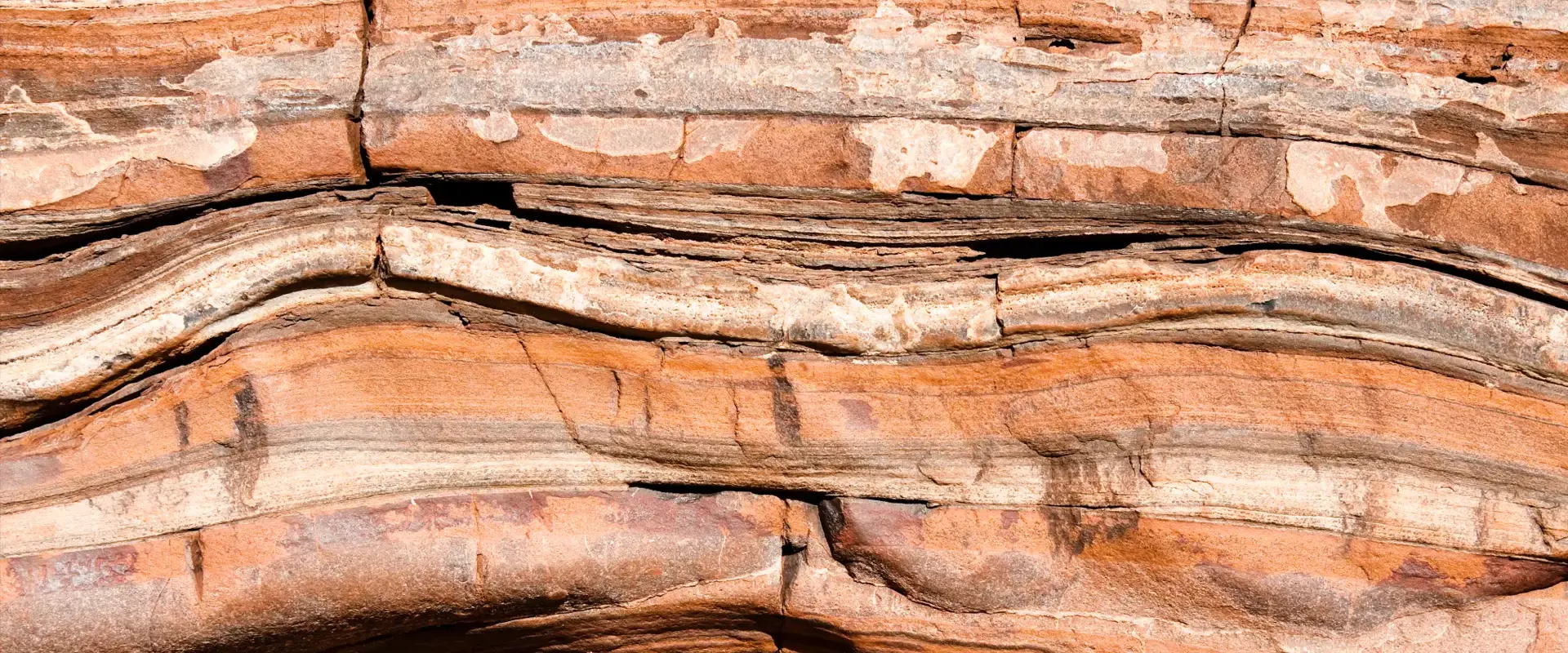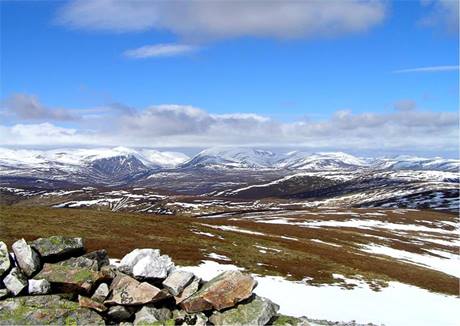
Cairngorms, Scotland

The high plateau of the Cairngorms is Britain’s answer to the Arctic – wild and cold in winter. The mountains are made from granite – found one of the largest exposed plutons in Great Britain. Although the rocks are well-known, the granites still hold tectonic puzzles.
The Cairngorm pluton is one of a series of major granite bodies emplaced into the Grampians around 415-400 million years ago. They form the ‘Newer Granites’ of the Scottish Highlands that collectively brought the curtain down on the Caledonian orogeny in northern Britain. The primary source of these igneous granites was the melting of deep continental crust as a result of the orogeny, but their chemistry also indicates that a significant component came from the mantle and may have been the product of subduction of oceanic crust. However, this raises a problem regarding timing, as the subduction of the Iapetus – the final piece of ocean floor to be consumed as the ancient microcontinent Avalonia finally collided with Laurentia – had finished maybe 20 million years earlier. The origins of the Newer Granites have therefore been widely debated.
 |
|
| A cairn of Cairngorm granite: © Chris Eilbeck |
Under most crustal conditions, granite (made up principally of feldspar and quarz) is a strong material compared with the quartz-mica rocks in the surrounding crust. So the addition of granite into developing zones of continental collision strengthens these parts of the crust making them less prone to continued folding of the sort associated with crustal shortening. Interestingly the Newer Granites were emplaced just as crustal shortening in the Caledonian mountain belt ended and the system evolved into so-called ‘wrench tectonics’, typified by strike-slip faults (in which movement takes place along the fault) such as the Great Glen Fault. The question is, was this cause or effect?
Further reading:
Harrison, T.N. 1986. The mode of emplacement of the Cairngorm Granite. Scottish Journal of Geology, 22, 303-314.
An overview of Caledonian igneous activity and its plate setting is provided by:
Stephenson, D. 2000. Chapter 1: Caledonian igneous rocks of Great Britain: an introduction. In: Stephenson, D., Bevins, R.E., Millward, D., Stone, P., Parsons, I., Highton, A.J. & Wadsworth, W.J., (eds), Caledonian Igneous Rocks of Great Britain, Geological Conservation Review Series, No. 17, Joint Nature Conservation Committee, Peterborough, pp. 648, ISBN 1 86107 471 9
Twinned with: New Hampshire Granites, United States
The granite formations of New Hampshire were so historically important to the economy of the state and well known in the region that they gave rise to the state’s nickname ‘The Granite State’. The moniker is attributed to the significant granite number of granite mines ...continue reading
Other sites
- Twin: Windward Isles
Cwm Idwal
- Twin: Mount Pinatubo
Sperrin Mountains
- Twin: Sierra Nevada
Southern Uplands
- Twin: Nankai
Ben Arnaboll
- Twin: Glarus Thrust
Outer Isles
- Twin: Tohoku Earthquake
Clogherhead and Shannon
- Twin: Papua New Guinea
Cairngorms
- Twin: New Hampshire Granites
Great Glen Fault
- Twin: North Anatolian Fault
The Lizard
- Twin: Troodos Ophiolite
Yoredales
- Twin: Antarctica
Stanage Edge
- Twin: Ganges Delta
Hartland Quay
- Twin: Zagros Range
Amroth-Saundersfoot-Tenby
- Twin: Salt Range, Pakistan
Vale of Eden
- Twin: East African Rift Valley
Zechstein
- Twin: Sicily
Alderley Edge
- Twin: Navajo Sandstone
Isle of Skye
- Twin: Mount Kilimanjaro
Lulworth Cove
- Twin: Albania
Giant's Causeway
- Twin: Cascade du Ray Pic
